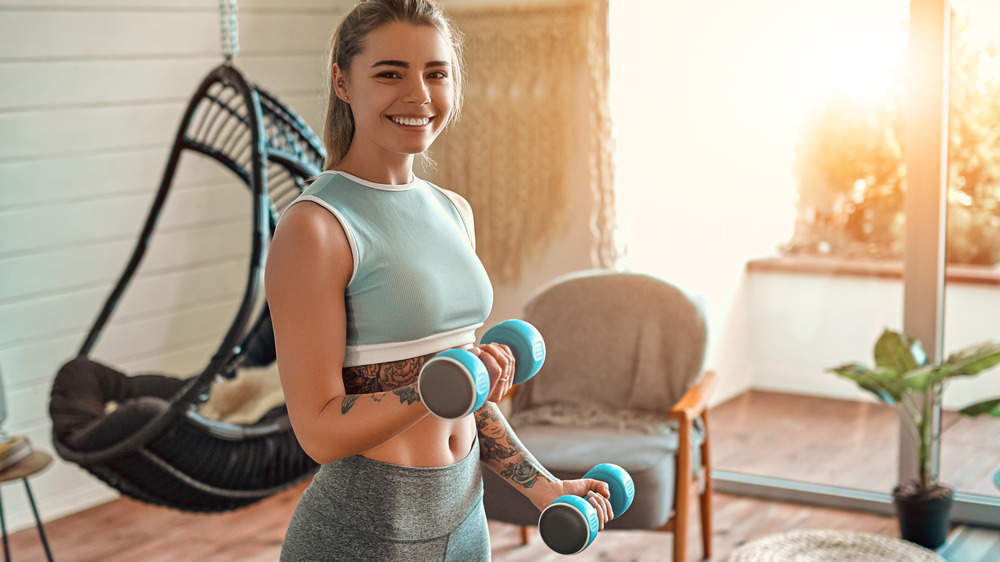
Your Guide to Lifting Weights Safely at Home
Recent times have meant that more and more fitness enthusiasts have had to find alternatives to the gym when it comes to getting their exercise routines done. The good news is, that with a bit of care and thought, you can safely and effectively lift weights at home. Read on for our guide to safe home workouts.
Use a mirror
Whether you’re new to lifting weights, picking them back up after some time off, or you simply want to carry on your regular routine while you’re at home – form is everything. Poor form when lifting is one of the main causes of exercise-related injuries – everything from strains and sprains through to longer-term issues like sciatica can be a result of bad technique.
Working out in front of a mirror gives you the immediate feedback you need to minimise these issues – you can see what your posture, positioning and technique are like before you go too far down the wrong path.
Lay down a mat
A decent home gym mat has a number of benefits. It’s more comfortable than standing on bare concrete, it gives you better traction (preventing slips and falls) and, if you drop a weight (we’ve all done it), you’ll protect your flooring and be less likely to suffer an injury due to ‘bounce back’ – when a free weight bounces off the floor and strikes you in the shin, foot or other body part.
Good quality leisure matting will be manufactured from rubber usually, so it is easy to clean and maintain, durable and long-lasting, and can often be neatly rolled or packed away as required.
Don’t overdo it
Remember that rest periods are just as important as active ones – you need to leave sufficient time for your muscles to repair and build strength. It can be tempting to overdo your weight lifting when you work out at home, as you don’t need to make the effort to go to the gym – the weights are right there.
Be sure to switch out your muscle groups on different days, and either design (and stick to) an exercise plan or find one pre-designed by a personal trainer/expert/someone who you trust and who knows what they are doing.
Know your limits
Most people working out at home will be doing so without a spotter to help with the weights if necessary. You might feel confident in doing this, but there is a reason we use a spotter when we’re at the gym – it allows you to push yourself without risking your health and safety unnecessarily.
When you’re at home, stick to weights that you know you can comfortably lift and, if you plan to build up to heavier loads, do so in much smaller increments than you might in a gym.
Stretch it out
Weight training without the proper preparation can cause serious injury. Make sure you fully stretch your muscles before you start, and ensure that your joints are loose and flexible. Focus on the areas you will be working on (legs for leg day, arms for curls, etc), but make sure that you do full body stretches as well – even focused exercises tend to use a broader range of muscles than many people think.
Author Bio: First Mats started life as safety matting specialists, but have since expanded to become a complete industrial and commercial supplies company. The focus of First Mats is to provide safety-focused products that improve the wellbeing of staff through quality approved products, backed up by extensive knowledge. www.firstmats.co.uk